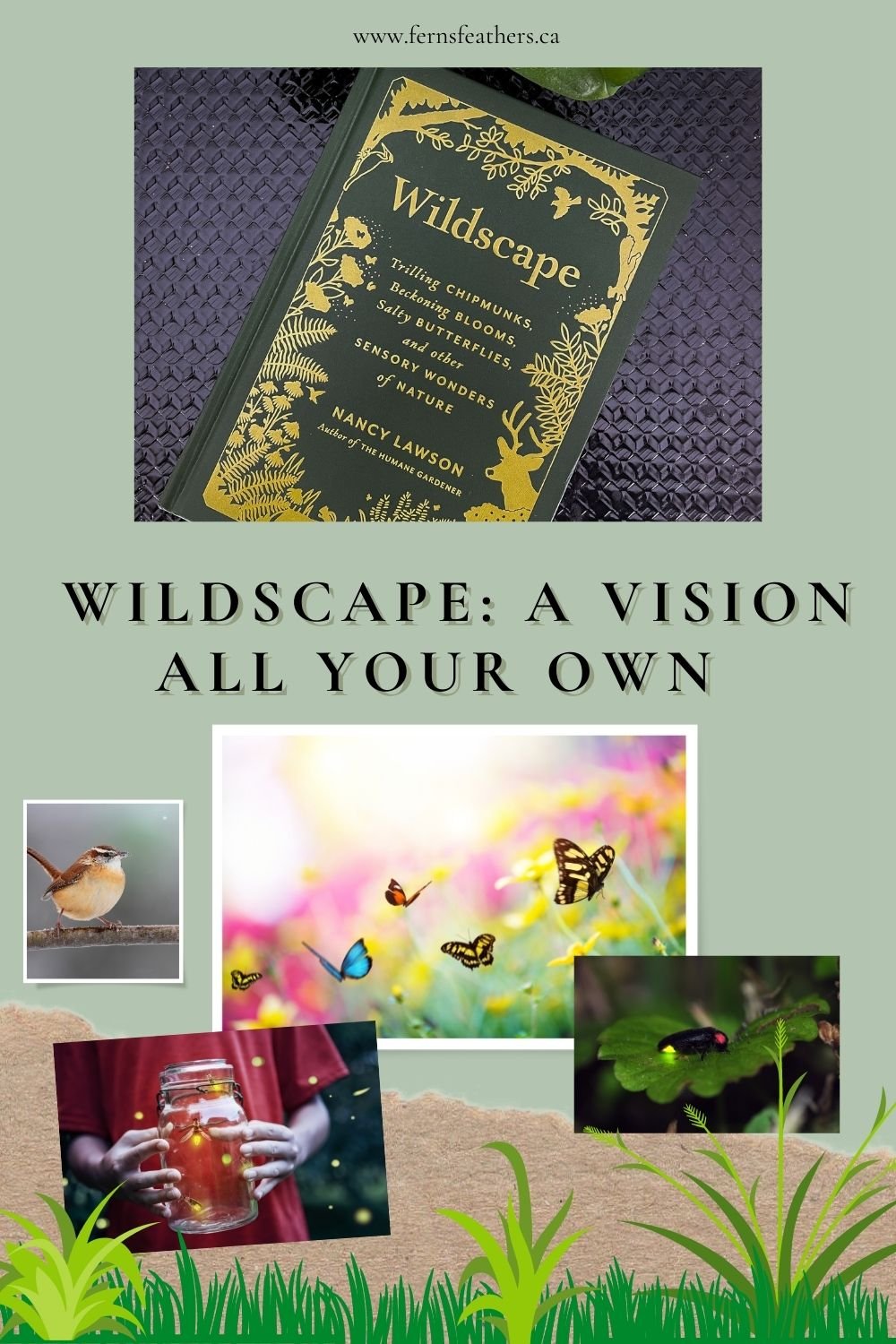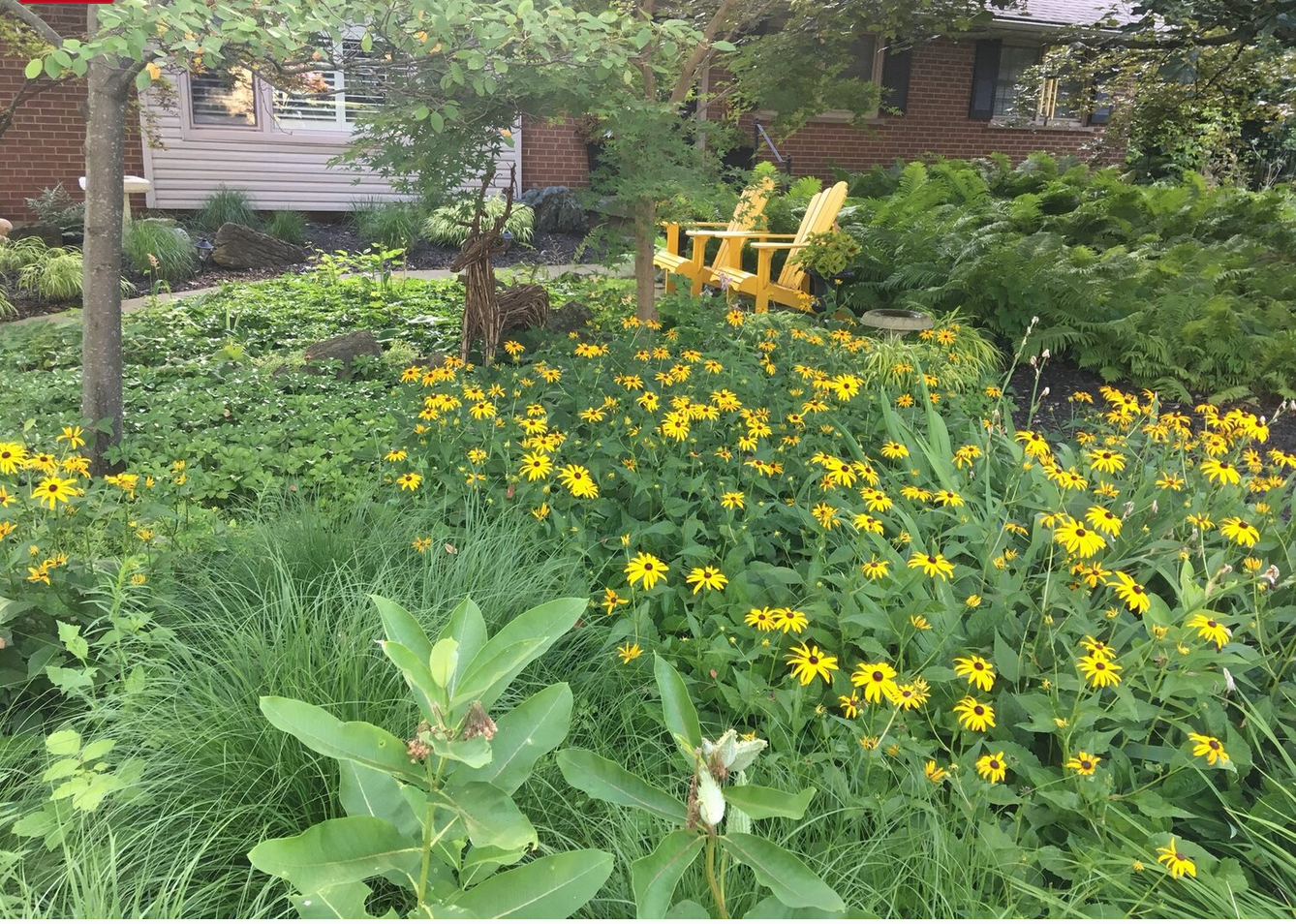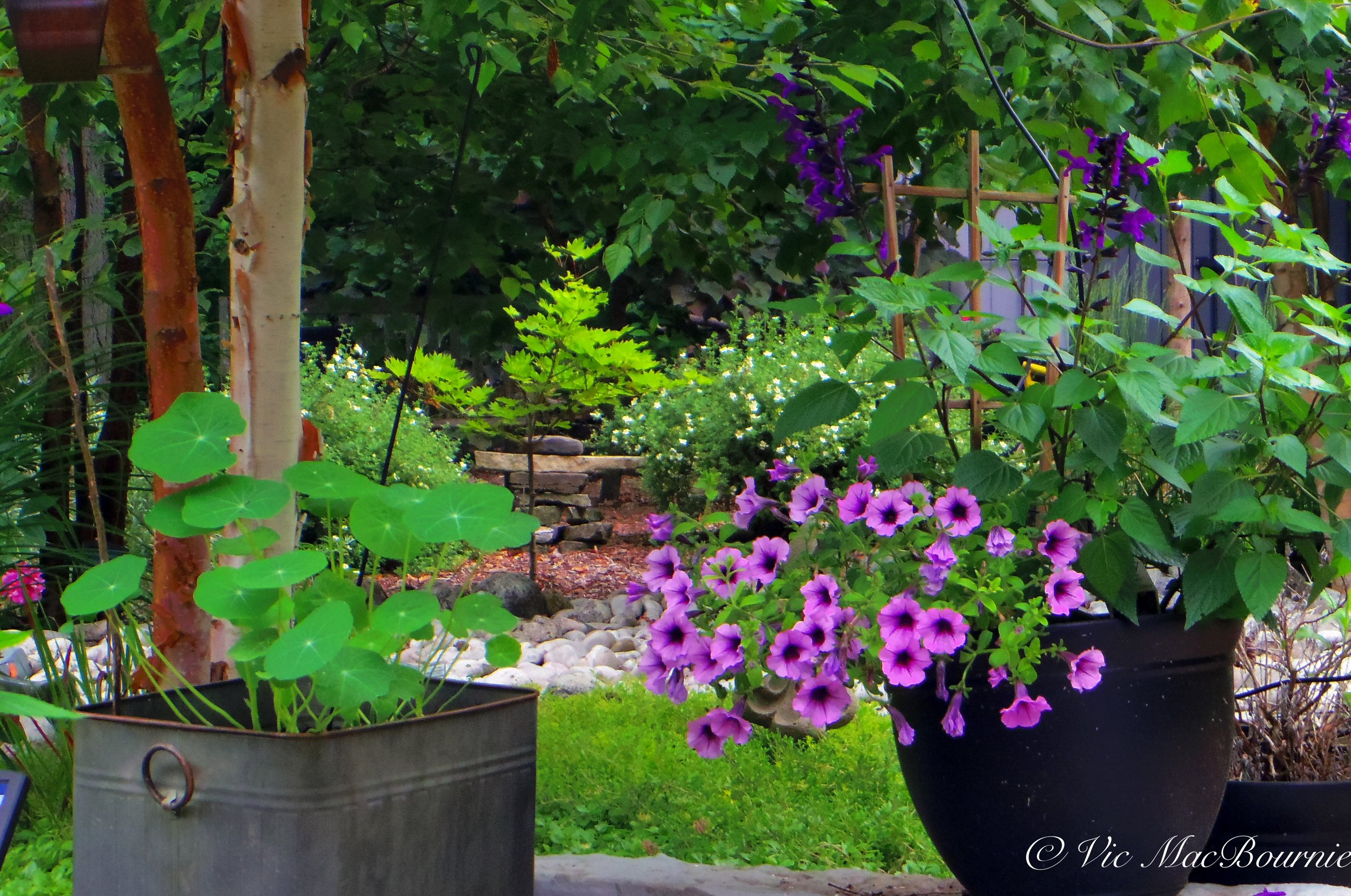Wildscape: Cultivate a vision all your own
Author encourages readers to include wildlife in their garden vision
If you are looking for gardening advice about how to pretty up your front or back garden, Nancy Lawson’s newest book, Wildscape, is probably not for you.
But, if you are a wildlife gardener and are in need of inspiration with a very strong hit of validation, you need to get your hands on this little book packed with incredible insights, fascinating tales and love stories. And nothing better illustrates Nancy’s love for gardening and the creatures that call it home than the final chapter of her book.
It’s the culmination of a love story about her father who recently passed away, her sister and her family who fought their HOA for the right to enjoy their vision of natural beauty and, finally, it’s a passionate plea for the wildlife that face daily battles to survive in an ever changing environment.
If The Humane Gardener, Nancy Lawson’s first book, was a plea for respect and compassion toward all species and a call for gardeners to welcome all wildlife to our backyards, Wildscape is a call to action for gardeners to recognize the problems humans are creating and how our actions are, in many cases, forcing garden wildlife to change natural behaviours to survive.
In her latest book, Wildscape: Trilling Chipmunks, Beckoning Blooms, Salty Butterflies, and other Sensory Wonders of Nature (PA Press, Princeton Architectural Press, New York) Lawson explores – in five chapters – the sensory wonders of nature and the incredible adaptations insects, mammals, birds, reptiles and amphibians are sometimes forced to make to survive and prosper in our gardens.
Ferns & Feathers recognizes the value and importance the book Wildscape brings to gardeners and has decided to dedicate separate posts to each chapter of this valuable book.
For more on Wildscape, check out my reviews on
A vision for a new approach to gardening
The fifth and final chapter – entitled The Sightscape – turns its focus on vision. Vision – in the sense of the outright appearance of our gardens as well as our vision for the future – both in our gardens and the natural world.
The final chapter is about our interpretation of natural beauty. It tells the tale of her sister’s family and their battle fighting an HOA whose idea of the perfect landscape is acres of monoculture turf grass kept alive with pesticides, herbicides and an army of landscapers attacking neighbourhoods with a barrage of obnoxious weapons stripping the landscape of the very life that is waiting and eager to rise up to fill the neighbourhood with bird song, crickets and the sounds of life.
This chapter is about winning the small battles as a first step in coming out victorious in the war against people and an HOA. It’s about turning the tide of what is no longer acceptable for the future of our children and the wildlife we share our gardens and the earth with.
Nancy is able to accomplish this in a convincingly quiet manner using nature as her guide.
The Carolina wren needs insects, caterpillars and a more natural landscape to feel at home. It’s song in Nancy’s sister’s garden was a welcome celebration of the garden’s success.
Small victories in a bigger battle
It opens with the song of the Carolina wren singing in her sister’s unconventional butterfly garden celebrating a small victory for nature.
“From our chairs on the driveway, my sister, Janet, and I reveled in his territorial music, a kind of victory song for us too. The day before, the Maryland legislature had codified her right – and the right of people across the state – to grow gardens for bees, butterflies, birds and other wildlife. Her four-year battle with her homeowners association had planted the seed for a much larger fight, and now it was time to celebrate the new law of the land.”
The battle between the family’s vision of a garden and the HOA’s is one that goes on in many neighbourhoods in states, provinces and countries in the United States, Canada, the United Kingdom and other countries around the world struggling to recognize the value of native plants and a new way to garden.
The wren, celebrating spring in the garden, asked for little, Lawson explains.
“But if my sister’s neighbour had gotten his way, most of the wrens’ housing construction materials would have disappeared, and their grocery shelves would be empty. Despite the low demands and helpful ways of these hardworking birds, they were once unwelcome in Janet’s community, where one resident took it upon himself to declare turfgrass the only acceptable plant and to decry the presence of animals as verboten.”
Nancy goes on to explain how this one man influenced the HOA to spend “about a hundred thousand dollars of the community’s money” trying to destroy her sister’s garden.
“In a series of bullying letters, the HOA’s contracted law firm wrote that a garden ‘without the use of pesticides in which they have maintained ‘native plants’ to provide food for the birds, bees, and other insects and animals’ is “completely contrary to the overall design scheme for the Association, which is a planned development. Lots within the Association are intended to be uniform in design and character with manicured yards and green grass for lawns.”
Nancy’s conclusion is all we need to recognize that the battle is an ongoing one that needs our attention, and the attention of progressive thinkers who recognize that we are slowly becoming the voice of wildlife.
Finding your own vision of beauty in the garden is important.
“For the sake of a fake aesthetic – a collective conformity manufactured in the minds of corporate lawn and pesticide marketers – our culture has sacrificed birds and their soulful songs bees and the fruits of their buzzing labors, mikweeds and their heady perfumes, and rocks and branches and leaves and all the frogs, salamanders, beetles, and other hidden treasures underneath. We’ve given up the scentscape, the soundscape, the tastescape, and the touchscape in the name of an arbitrary sightscape that’s dead boring at best and most often just plain deadening. In the dominant paradigm, there is virtually no sightscaping at all, nothing for people to look at and no place for animals to hide and perch and take in the view. There is no color but uniform green, subsuming the splash and the flash that butterflies, fireflies, birds, bees, wasps, and so many other animals bring to a more natural garden…”
Pretty pink Planthoppers, Katydids and evolution
And then there is her fascinating story about the pretty pink planthopper she discovered in her garden. And, like the new YouTube watcher who discovers the bounty of garden videos, leads her down a path of discovery about Katydids, pink colorations and the possible evolution of these largely unstudied little sap suckers.
Equally fascinating are the caterpillars who use bits of flowers and lichen to visually camouflage themselves from predators, or the “color shifting” spiders who take on the yellows and purple flowers they lie in wait on to nab their next meal.
Our gardens play out visually in so many more ways than we ever really think about.
There is the grey tree frog that takes on the look of mortar when its tucked away in a crevice around the bricks of our home, but is just at home wearing its bright green outfit while hanging out on a similarly colored leaf.
And don’t forget about the fireflies that greet us with their delicate dances of light in our yards if, and only if, we put away the pesticides, lawnmowers and grow native plants.
But there is also the light pollution our neighbours inflict on us and the wildlife to light up their homes for all to see complete with massive windows that create illusions of wide open spaces that only end in the tragic deaths of countless birds.
A vision all your own
In conclusion Lawson writes: “For animals and plants, blending in and standing out in the landscape is a matter of survival. For humans, it’s a choice, and many people choose to blend into blandness, wearing the mask of the responsible neighbor who mows his lawn once a week, or the tidy homeowner who leaf-blows and stump-grinds away the understory, or the well-off family who can afford to hire a company to do all that for them. But far from protecting anyone, our forms of crypsis (crypsis: the ability of an animal or a plant to avoid observation or detection by other animals) are pretenses that banish other lives from the premises and impoverish our own in the process. Instead of blending into the barrenscape next door, why not try blending into nature, turning the trees and their leaves and the colourful cast of wild character they shelter into sparkling centerpieces of the neighbourhood?”





